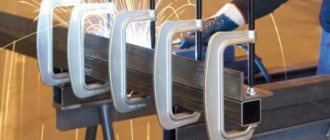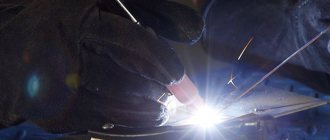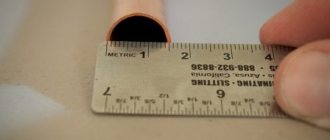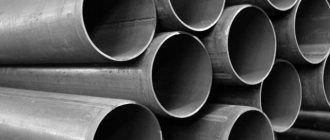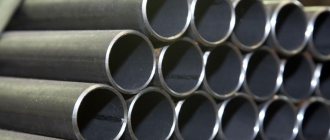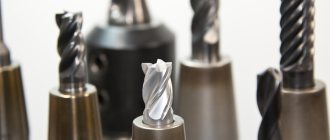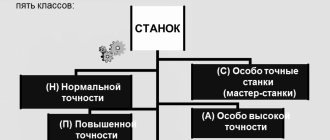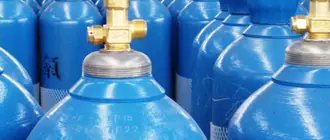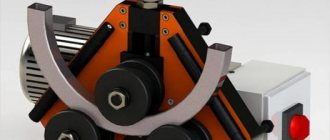Grinding wheels are abrasive tools that consist of grains cemented together with a certain binder. They are widely used for industrial and domestic purposes for grinding various surfaces. This procedure allows you to achieve a presentable appearance of the product and give it the necessary technical characteristics. How to choose the right grinding wheel for home and industrial work, and what you need to know about grinding wheels before purchasing them - read about this in our article.
- Scope of application of grinding wheels
- Types of grinding wheels
- Characteristics of grinding wheels and their markings Grit size
- Types of abrasive compositions
- Binding components
- Hardness indicators
Scope of application for cleaning grinding wheels
The abrasive tool finds its use both in domestic conditions and in industrial production. In the process of carrying out repair work, you cannot do without stripping grinding wheels: they are used to remove old paint and rust from metal structures, preparatory cleaning of concrete walls for subsequent laying of tiles.
Grinding wheels are also used in industry: for processing bar and panel parts in machine tool and mechanical engineering. A wide range of materials can be sanded, including:
- ferrous and non-ferrous metals, soft alloys;
- stone;
- plastic;
- wood.
Grinding wheels are used to remove rust from metal parts, as well as to sharpen knives and other cutting objects on sharpening machines. Jewelers use grinding wheels for polishing precious metals and finishing the surface of semi-precious stones and ornamental minerals.
Structure and hardness index
The density of the structure of grinding wheels is indicated by the percentage of the volume of abrasive grains per unit volume of the wheel. The more abrasive, the denser the structure of the grinding wheel will be.
When sharpening a tool, a wheel with a less dense structure is better able to clean the surface of material particles, poses less risk of deformation and cools faster.
Often, specialists use disks of medium hardness, but it all depends on the type of work being performed, the coating being processed and the tool itself.
What are the structure numbers and volumes of abrasive in the grinding wheel:
- dense structures include units of measurement from 1 to 4;
- Average density includes numbers 5-8;
- to open – from 9 to 12;
- a highly porous structure is observed in circles with indicators 13, 14>.
However, do not confuse wheel hardness with abrasive hardness. According to GOST 2424, the hardness of a grinding wheel is distinguished by a capital letter.
According to GOST R 52587-2006, there are the following designations:
- very soft - letters F and G;
- to soft circles – H, I, J;
- medium softness includes markings K, L;
- averages are M, N;
- circles of medium hardness are designated by the letters O, P, Q;
- solids are designated as R and S;
- very hard – T, U;
- Extremely hard ones include V, W, X, Y, Z.
What grinding wheel hardness should I choose? This depends on many parameters - the characteristics of the material or surface being processed, physical properties, and, of course, the power of the grinding machine. If you need to maintain the exact shape of the material being processed, you should purchase a wheel with a high degree of hardness. Soft ones are used to prevent cracks and burns, also when grinding without additional liquid-lubricant cooling of the surface.
For example, let's take the same 25A grinding wheel, which has a hardness class of K and a structure of 7. This means that this disc is medium-soft and has a medium abrasive structure.
Types of grinding wheels
According to the non-professional classification of grinding wheels, the following types are distinguished:
- Velcro discs
are made of sanding paper on a Velcro base, which is attached to the support using a self-adhesive backing. This material is considered consumable and is used in woodworking, metalworking, repair and construction. The Velcro sanding wheel is installed on a grinder or eccentric sander, as well as on a handmade drill. It is marked with a different color indicating the grain size. For example, brown is suitable for wood and metal, blue is suitable for stainless steel, and black can be used to process minerals. - The flap wheel
is fan-shaped, has good elasticity and easily adapts to any surface. It is mainly used for grinding pipes, fittings, and wood products. - A fiber grinding wheel
is a grinder equipment for processing surfaces made of ferrous and non-ferrous metals and steel. Used for cleaning weld seams and removing spatter. The fiber base for such discs is made by processing cellulose. - The diamond grinding wheel
is used for fine grinding of carbide materials, glass, ceramics, precious and semi-precious stones. The diamond blade has an optimal balance of fragility and strength and has a large working reserve.
Abrasives and grit
The abrasive material is indicated by alphanumeric markings. Thus, electrocorundum is marked with the letter A. White electrocorundum - from 22A to 25A, normal from 12A to 16A, chromium from 32A to 34A. There are also titanium electrocorundum (37A), zirconium (38A) and other varieties. The higher the number, the higher the quality of the material. Silicon carbide is designated by the letter C and is divided into black (from 52C to 55C) and green (62C – 64C).
Diamond wheels are marked as follows:
- AC2 – circle of normal strength.
- AC4 – increased strength.
- AC6 is a high-strength abrasive.
- AC32 is a monocrystalline abrasive.
The grain size determines the cleanliness of the resulting surface. The marking indicates the size (width) of the grain. In accordance with the old GOST 3647-80, this parameter is indicated in units equal to micrometers divided by 10 (10 = 100 microns). Micropowders are marked with the letter M. According to the new GOST R 52381-2005, the grain size is indicated by the letter F and a numerical designation. Moreover, unlike the old standard, the larger the number, the smaller the abrasive grain size.
Characteristics of grinding wheels and their markings
The quality characteristics of grinding wheels are regulated by GOST, technical specifications and are indicated on the product labeling. Basic parameters include:
- class, profile and size;
- grain;
- abrasive material;
- binding material;
- hardness.
The accuracy and quality of grinding directly depends on the class of the abrasive tool. Class B grinding wheels are used for less critical operations and have the lowest accuracy. An abrasive tool of class A is more accurate and of higher quality. The AA class grinding wheel is usually used for work on precision grinding machines and is characterized by the highest accuracy of geometric parameters, uniformity of the grain composition and balance of the abrasive mass.
The profile of the wheel determines the possibility of performing certain jobs. Marking of grinding wheels is carried out in accordance with GOST 2424 and is indicated by letters and numbers. Below are the most common grinding wheel profiles and their areas of application.
| Marking | Application area |
| PP – with straight profile | rough metal grinding |
| 2P – conical double-sided T – disc-shaped | machining threads and gears, sharpening multi-blade tools |
| 3P – conical one-sided | tool sharpening and other operations |
| PV – with one- or two-sided grooves | centerless metal grinding |
| K – ring | face grinding with flat surface |
| CHK – cup | sharpening, straightening, grinding of friction surfaces of metalworking machines |
In addition to the profile shape, grinding wheels differ in size - outer diameter, hole diameter and height (DxTxH). For example, marking 350x40x127 would mean that the outer diameter of the disk is 350 mm, the inner diameter is 40 mm, and the height (thickness) is 127 mm. The most popular grinding wheels for household machines are those with outer diameters of 125 mm, 200 mm and 230 mm.
Grain
The choice of grinding wheel grain size is determined by the requirements for the cleanliness of the surface being processed and the type of grinding operations. The grain size indicates the thickness of the layer removed in one pass. Thus, metal grinding wheels for roughing work have a coarser grain, and to ensure smoothness and precision of processing, fine-grained wheels are used. For face grinding, as well as for processing parts made of copper or brass, it is better to use coarse-grained wheels to avoid clogging.
The grain size of grinding wheels is characterized by the size of the abrasive grains and is indicated by a certain number (the higher the number, the lower the degree of grain). The table below provides recommendations for choosing the grain size of a tool to perform a particular type of work.
| Type of grinding | Recommended wheel grit number |
| Thread grinding | 100-280 |
| Finishing | 180-320 |
| Tool sharpening | 170-220 |
| Round finishing | 600-100 |
| Round roughing | 24-40 |
| Flat, end | 16-36 |
Types of abrasive compositions
According to GOST 28818, materials for the production of grinding wheels must have significant hardness, low thermal conductivity and resistance to frictional wear. The following abrasive compositions are allowed:
- Bauxite-based electrocorundum is characterized by an increased level of hardness and heat resistance. Such circles are marked with an alphanumeric index (12A - 15A, 22A - 25A), with an increase in which the hardness of the base substance and the strength of the circle increase.
- Carbide-based electrocorundum is used to remove surface layers from parts that have already been subjected to heat treatment. The marking code starts from 38A (zirconium carbide) and ends with 95A (chromium or titanium carbide). Grinding wheels made on the basis of silicon carbide (52C-65C) have excellent resistance to temperature changes and are used for working on cast iron, non-ferrous metals and alloys.
- Spherocorundum is a material based on molten aluminum oxide with spherical grains. This composition is characterized by high hardness, which makes it possible to use it for processing hard alloys. Grinding wheels made of spherocorundum are marked with the letter “ES”.
- Monocorundum is a material with a grain having a monocrystalline structure (43A-45A). This abrasive composition is durable and is used for processing tool and heat-resistant alloys.
Binding components
Along with the cutting substance from which the grinding wheel is made, the bonding method plays an important role: it is thanks to it that the abrasive mass is not destroyed. Typically, bakelite or ceramic is used as a binding component. Tools based on bakelite binder have increased density, are heavy and are suitable for metal work. However, there are some restrictions on rotation speed, especially when it comes to hand-held grinders.
A ceramic binder based on clay or quartz makes the grinding wheel lighter, and as a result, a high rotation speed is achieved on the grinding machine. At the same time, the durability and hardness of such a tool is significantly lower. A mixture of artificial rubber and sulfur produces a vulcanite binder. Such discs are characterized by increased wear resistance and good elasticity, but are much more expensive than modifications with ceramic abrasive.
Hardness indicators
The hardness of a grinding wheel is a property that allows it to retain grains under external influence. The lower the hardness index, the faster the destruction of the abrasive occurs. Medium hardness abrasive wheels are the most common as they provide the optimal balance of performance and durability. Marking of hardness indicators of grinding wheels for grinding machines is indicated by an alphanumeric code, where M is soft, ST is medium-hard, T is hard, CT is extremely hard.
For processing threads or small parts, grinding wheels with high hardness are used. Soft tools are great for flat or rough grinding. The harder and larger the workpiece, the softer the abrasive disc is used to process it.
The role of ligaments
In addition to the cutting substance itself, the method by which it forms the abrasive mass is also important. GOST allows the use of bakelite or ceramics as binders. The bakelite version is good for its higher density, so the wheel has a higher mass and is suitable for working on metal, but with a limited peripheral rotation speed (especially if a hand grinder is used). The use of ceramics makes the grinding wheel lighter, and the permissible speed of its rotation on the machine increases accordingly. However, the abrasive resistance, as well as the hardness of the wheel with ceramics, are reduced.
The connection also determines the method of attachment to the base of the body. For example, film fastening is suitable for ceramic bonds, but not for bakelite bonds.
A special type of ligament is fiber. This base is used in the so-called “cold” grinding of metal on a machine or machine, when the stainless steel surface or weld area is cleaned. In this case, the material being processed practically does not heat up, since the depth of the grinding zone is insignificant (the process is actually closer to polishing). Marking is carried out in accordance with the standards of GOST R 51967.
Other types of bonds are also used to a limited extent - from various epoxy compositions, magnesite, porcelain.
How to choose and buy the right grinding wheel?
To buy a grinding wheel that will be as efficient as possible and will last for a long time, you need to carefully approach the issue of choice. To do this, follow the recommendations of experts:
- Consider the specifics of the tool you are using: to work on a grinding machine, you will need a wheel that can withstand high pressure. An angle grinder requires a grinding disc with increased resistance to rotation speed.
- Carefully study the product labeling, which contains all the necessary symbols: size, class, profile, grain size, abrasive composition.
- Select a tool depending on the material of the surface being processed and the grinding area.
- Do not use abrasives that have expired to avoid damage and health risks.
- Choose products from trusted manufacturers who follow the requirements of TU and GOST.
Brokstal LLC sells abrasive tools from reliable domestic manufacturers. From us you can buy grinding wheels of various sizes at affordable prices. If you need help choosing products, contact us by phone 7 (8362) 32‑15‑15 or use the “Make an order” button. You can get acquainted with the range of grinding wheels and prices in the “Price List”, and used pipes are also available for sale
What is indicated in the labeling
The main characteristics taken into account when choosing wheels are their type, type of abrasive, bond, hardness and grain size. In this case, hardness and structure for many types of processing play a more important role than the abrasive material.
Product labeling contains the following information:
- circle type;
- product size;
- abrasive material;
- graininess of the circle;
- product hardness;
- structure;
- binding material;
- permissible rotation speed;
- circle accuracy class;
- imbalance of the circle.
When choosing a wheel, it is necessary to take into account that the markings made in accordance with various GOSTs differ in the designations of grain size, hardness and other parameters. In addition, manufacturers use different markings for their wheels, excluding some parameters and using old and new designations. Let's give an example of decoding
1 – 25A – white electrocorundum is used as an abrasive; 2 – average abrasive grain size 370 µm (F46); 3 – medium-soft hardness, type L; 4 - middle structure (6); 5 – ceramic binder (V); 6 – maximum rotation speed 35 m/s; 7 — accuracy category B; 8 – 3rd class of imbalance.
This is interesting: How and with what to solder stainless steel at home: tips, videos, photos
Best Sanding Discs (Bolt-On)
- Model 3M 57018 is distinguished by reliable fixation and increased strength. The sanding disc is suitable for long-term use under intense loads. The design of the abrasive is three-dimensional, so the disc does not deform even during high-speed rotations of the wheel. The model is characterized by increased wear resistance, elasticity and the ability to cool quickly.
- Stayer 36228-150-6.0 is made using multilayer reinforcement technology (fiberglass mesh). The disc is characterized by a long service life, strength and resistance to deformation. Aluminum grains can be used when the circle rotates over 10 thousand revolutions per minute. Stayer perfectly cleans welds and removes burrs from metal.
- ZUBR 36204-150-6.0 z02 is also produced using the reinforcement method (polyamide mesh). The grinding disc is highly durable and ready for intensive work for a long time. Abrasive – aluminum oxide. However, the grinding wheel is only suitable for rough processing of materials.
